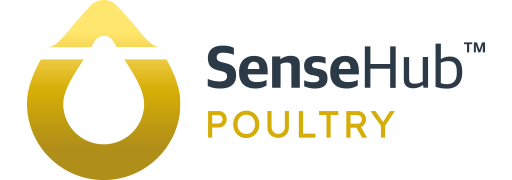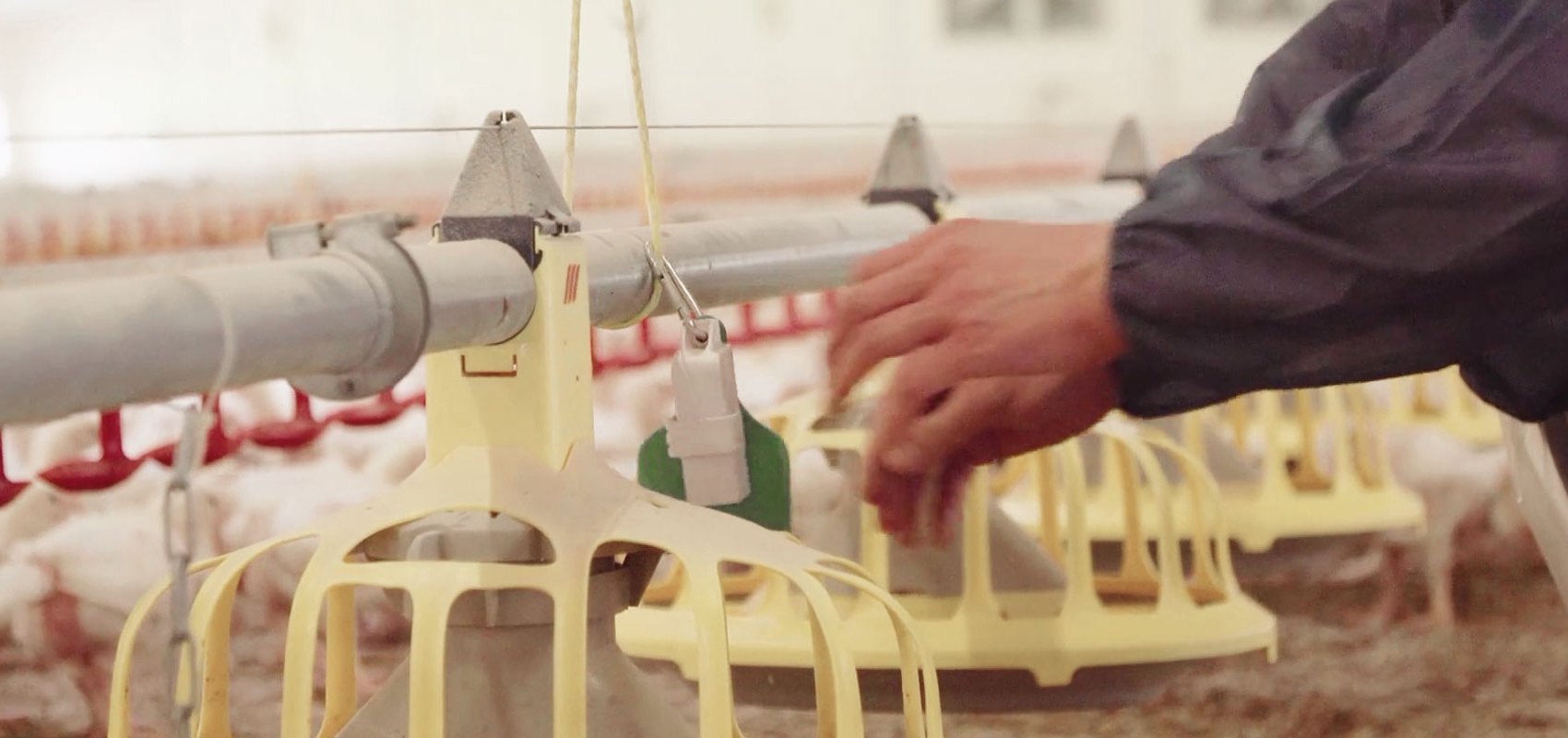Broiler farmer, Robert Lanning, worked closely with SenseHub™ Poultry CEO Alan Beynon when he was a practicing vet, and they kept in close contact when Alan founded SenseHub™ Poultry.
Robert was a strong believer that remote monitoring technology and in-depth data analysis could improve environmental and performance parameters within poultry houses and therefore was always at the end of the phone to discuss the progress of SenseHub™ Poultry.
Having seen the success of SenseHub™ Poultry on his Devonshire site over the last few years, Robert was eager to install the technology on a new site which had a number of problems.
Identifying challenges
In June 2020, Robert bought a 220,000-bird broiler farm in Wiltshire. The farm was previously experiencing poor EPEF and inconsistencies with bird weight gain and feed conversion efficiency, leading to an unprofitable margin per metre per week.
When Robert purchased the farm, he identified a number of areas that needed improving including ventilation, access to water and water quality. These factors were affecting the birds gut health, reducing water and feed intakes and hindering overall bird performance.
Making on-farm improvements
Initially Robert updated the heating supply inside the poultry houses to increase the number of kilowatt’s (KW’s) to achieve a consistent temperature in the shed.
The next investment involved installing 25,000 drinking cups to the water line to catch the drips to create a higher-water pressure to encourage better water intake. After a couple of flocks, it was discovered that the water quality was poor. The large header tank was heavily contaminated and so a water sanitising system was fitted.
After no improvements were seen in bird performance, Robert decided to install a new ventilation system. A smoke test was carried out to help gauge the air movement in the shed, which alerted Robert to the fact that air circulation was inconsistent throughout the shed(s).
Installing poultry technology
After these initial changes were made, SenseHub™ Poultry was installed. It was at this stage Robert was able to begin collecting accurate data, 24/7 and remotely monitor a broad spectrum of environmental and performance parameters.
The data and analytics derived from SenseHub™ Poultry allowed the results of the changes that had been made to the sheds to be quantified. A number of the KPIs significantly improved, and EPEF, daily live weight gain and water-to-feed ratio all started to meet the industry benchmarks.
Despite previously struggling to maintain the consistency of the birds, the farm was able to utilise the analytics provided by SenseHub™ Poultry to manage the sheds and each individual flock. This enabled Robert to provide a stable environment for the birds to thrive.
Bird performance
| Parameter | Average of four flocks before SenseHub™ Poultry installation | Average of four flocks after SenseHub™ Poultry installation |
|---|---|---|
| EPEF | 338 | 387.38 |
| DLWG | 56.43 grams | 62.29 grams |
| Water: Feed ratio | 1:88 | 1:71 |
- The EPEF improved from an average of 338.59 for the first four flocks to 387.38 for the following four flocks
- The most recent flock reached an EPEF of 420 – this showed a significant improvement in efficiency
- The feed conversion ratio (FCR) increased and the feed to water ratio decreased, which indicates improved feed efficiency
- Daily live weight gain (DLWG) also improved after SenseHub™ Poultry was installed
Is poultry technology worth it?
Taking over a farm that was underperforming for some time was a huge risk and a big investment for Robert but having the assurance and backing of the technology helped to justify making such a big move.
Alongside the improved KPIs, the average margin/metre/week also increased by 36p. This equates to £6,000 over the entire crop, for a 50,000-bird broiler shed. This can be the difference between making a profit or a loss.
For more information on SenseHub™ Poultry, visit our website: https://msd.sensehubpoultry.com


